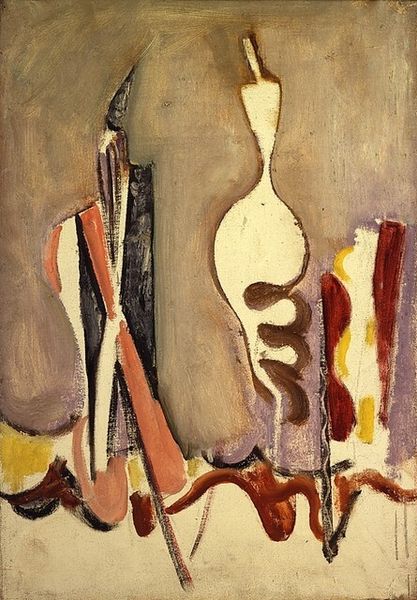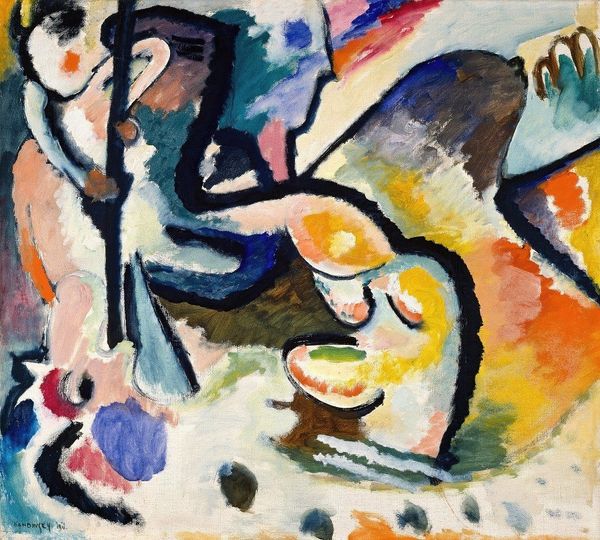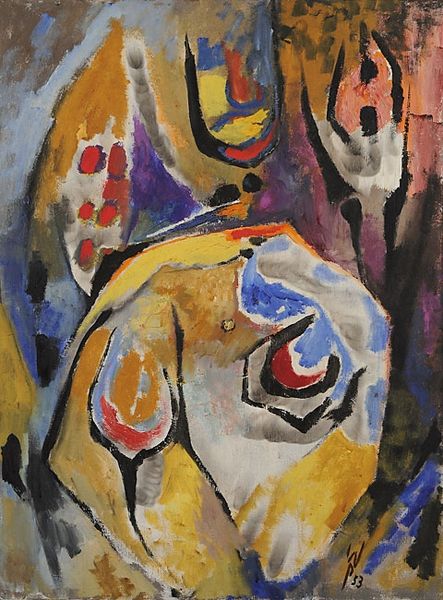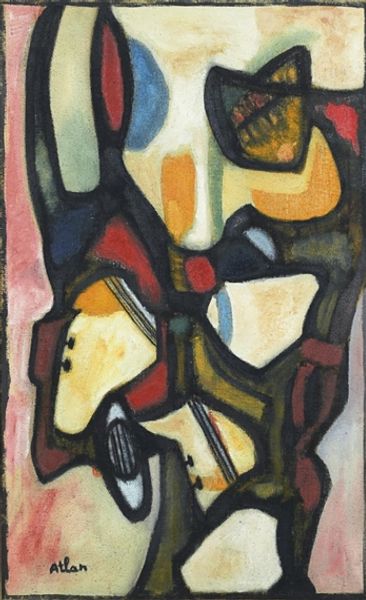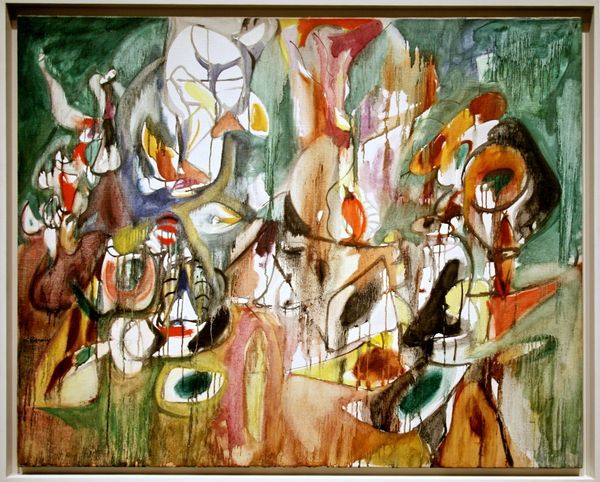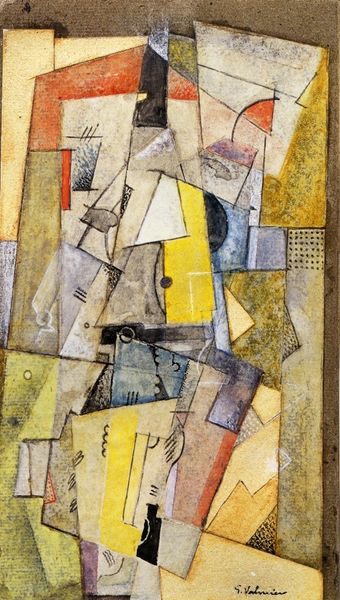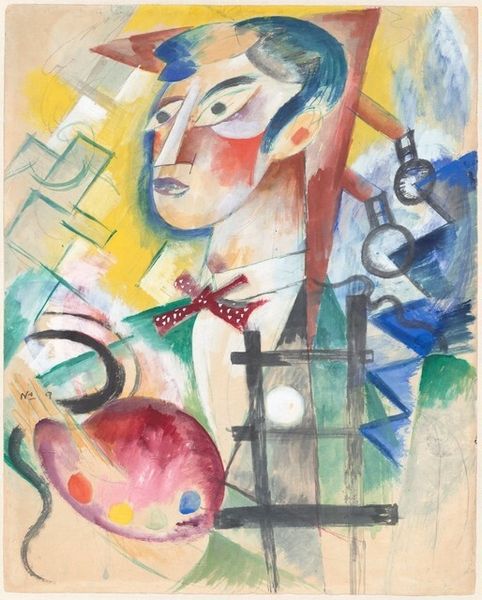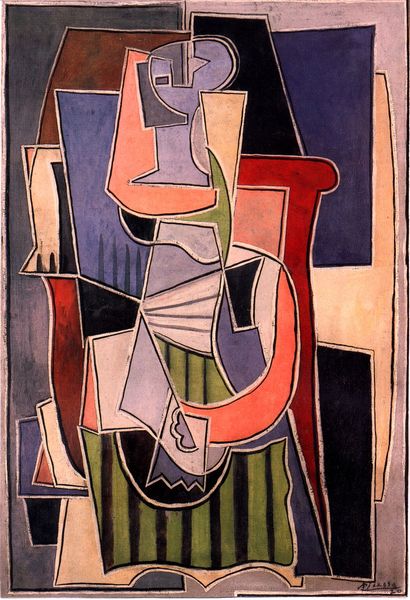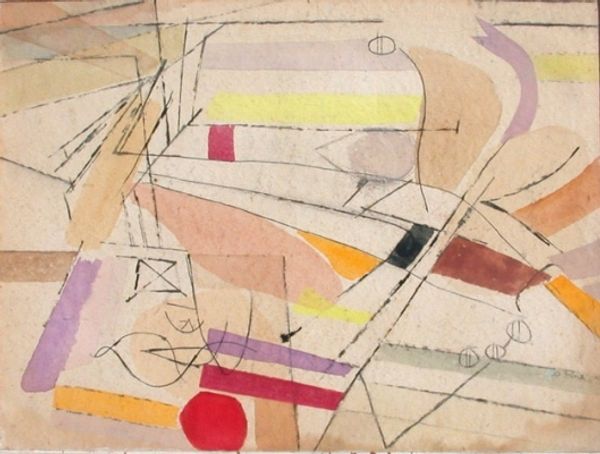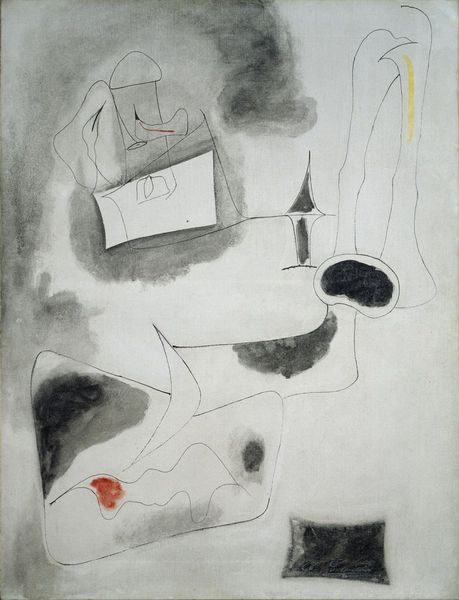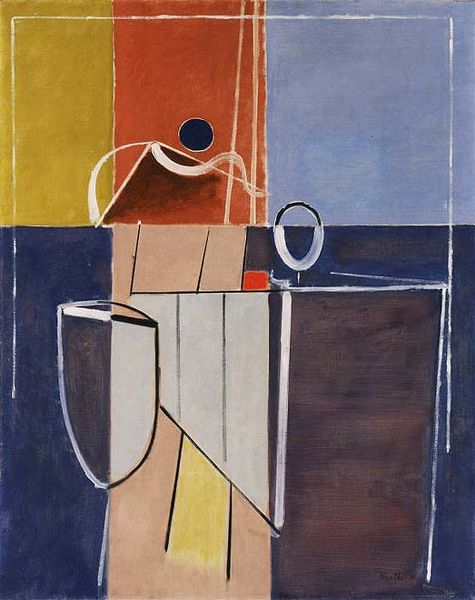
Copyright: Public domain
Curator: Looking at this watercolor, "Smoking in the Shelter" by Roger de La Fresnaye, created in 1918, I immediately notice its complex geometry, especially how blocks of muted colour hint at something deeper. What strikes you initially? Editor: The fragmented forms give it an anxious, almost claustrophobic feel. The title implies safety, but there’s a visual unease. It’s difficult to relax in that space, in a shelter that appears to be a psychic one more than physical. I’m interested in the way trauma affects form and shape. Curator: Absolutely. De La Fresnaye served in World War I, and although he was discharged due to illness before the end of the war, it's intriguing how his work after his service engaged in depicting these sorts of abstracted spaces that could evoke feelings around that historical moment. Watercolor, known for its fluidity, seems like a suitable medium to communicate this distortion. The artistic process, as he encountered and handled these fragile colours, gives rise to what we interpret in the image. Editor: Yes, and consider the socio-political context. 1918. Europe was war-torn, reshaping not just maps but the collective psyche. This isn’t simply an abstraction; it’s an expression of trauma processed through a lens of nascent modernist aesthetics. I am immediately intrigued by the fact of whether or not the piece can allow a discussion of psychological safety in art, what is shown, and what we think may not be showable. Curator: It does push at the boundary of acceptable subject matter given his recent wartime experience. Look closely at the production—the layered washes, the almost architectural construction via distinct shapes. De La Fresnaye isn’t just representing; he’s reconstructing, taking advantage of form to address the moment’s tension. What the hand holds becomes inseparable from the narrative conveyed. Editor: A reconstruction that questions the very concept of “home” or shelter, perhaps? How might one feel secure, sheltered even when all physical reality is unstable? I think the lack of figures contributes too, we feel that psychological impact to its fullest. This piece has made me really begin to think of cubism not simply as an artistic choice, but an aesthetic reflecting the disorientation of war and societal rupture, too. Curator: I'd agree. De La Fresnaye used familiar modernist techniques to express very complex issues; a piece that's stuck with me. Editor: The painting's open-endedness makes me want to delve further into this intersection, definitely prompting many questions and possibilities.
Comments
No comments
Be the first to comment and join the conversation on the ultimate creative platform.
